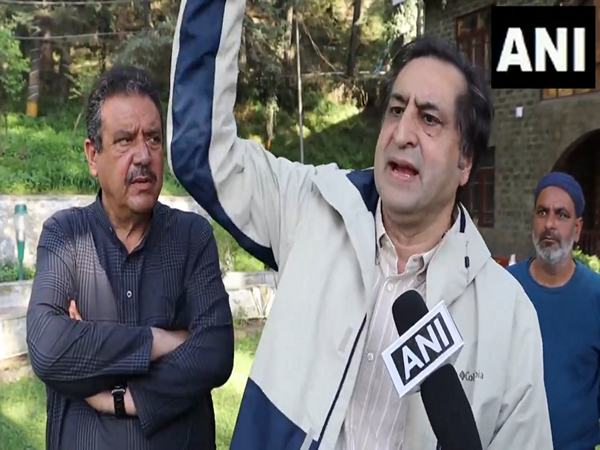A receding heritage, one musical instrument at a time
Nov 18, 2022

By Karan Kapoor
Jalandhar (Punjab) [India], November 18 : Every civilization in this world consists of a few unique characteristics which make it stand the test of time, and gives its citizens a strong sense of self. Music is one such characteristic, and India is one gargantuan example of a civilization whose music presents a distinct sound that immediately takes the listener to this rich and diverse country.
Now, each state of this millennia-old civilization has had aeons of musical legacy embedded within its culture, which cannot be found elsewhere. The state of Punjab is one such example, where music has been at the centre of the cultural ethos. However, the musical instruments associated with the age-old heritage of this state are slowly creeping towards irrelevance, and subsequently, extinction.
There used to be a time when any musical event used to take place anywhere in Punjab, the traditional musical instruments would make their presence felt. Be it the Tabla, Dholaki, Harmonium or Tumbi, all these instruments would make one feel the soul of Punjab through their intricate shapes and their mellifluous frequencies in every musical event that took place.
Over time, each of these pieces of Punjab's musical hues faded into oblivion. They got replaced by electronic drum sets, keyboards and electronic guitars. With the rise of musical commercialization, traditional musicians have shrunk in number. Hand-crafted heritage instruments are unable to keep up with the fast-paced music industry of today, where hits need to be churned out every other second.
Among the few places where traditional Punjabi instruments are still crafted, is the 'Calcutta Music House'. Situated on Jalandhar's Railway Road, it has been continuing its craft since 1961. Owner Tejwinder Singh, expressed his worries about the future of the business with ANI.
"The craft of making these legacy instruments is slowly going extinct. The future generation is not interested in learning it." He said.
"The electronic musicians took advantage of this situation and incorporated the sounds of many traditional instruments into their roster of electronic instruments. Since they are easier to play than the traditional instruments, most people prefer them." He regretfully added.
As musical tastes evolved, electronic music took the centre stage in the popular music scene and hence, many of the traditional musicians have also shifted their route towards a more modern sound in order to appeal to the current audiences.
Associated with the business of instrument crafting, Sardaar Joginder Singh has been a merchant of wooden instruments for as long as he can remember.
While speaking with ANI, he fondly recalled the process of instrument-making. He revealed that the instruments were composed of a special wood obtained from the lush forests of Jammu-Kashmir. However, the supply of that wood eventually got halted, which posed a major threat to the business of instrument crafting.
'Alternates exist, but they don't produce the same quality of the product as the original Kashmiri wood' Joginder told ANI.
He further added that the income of traditional instrumentalists and performers is dismal compared to the new-age electronic musicians and DJs.
'Electronic musicians get paid a decent 30,000 INR to 40,000 INR for their gigs. Meanwhile, traditional instrumentalists in auditoriums get paid a meagre 8,000 INR to 10,000 INR' he said.
Noting the irony in the situation, Joginder lamented the fact that while western nations have been consistently having demands of traditional Punjabi instruments like the Dhol, the Indian demand has significantly gone down, making craftsmanship a harder job to do than before.
Producing and repairing Harmoniums for the past 15 years, Mr Arun Kumar believes that the quality and quantity of artisans involved in the trade have gone down over the years. Many artisans of the previous generation are themselves dissuading their children from taking up this work, owing to the lack of job security.
However, he still sees the Harmonium, as well as artists who have a mastery over it, in high regard.
'The Keyboards can be used for programming melodies, but 'riyaaz' (Hindustani Classical vocal practice) cannot take place without the Harmonium. It has to exist in every musical setting. Yet, the demand for this instrument has constantly been going down, which is surprising' he told ANI in an interview.
Whether these legacy Punjabi instruments will continue enjoying the relevance in popular music they have had for all these years can only be seen with time. However, with the upcoming bunch of artists in the Punjabi musical scene like Guru Randhawa or Harrdy Sandhu all invested in electropop and musical genres based on electronic instruments, it remains to be seen how the receding flavour of Punjab's indigenous music, finds its way back to the hearts of the 'mundas' and 'kudis' of the state today.




















